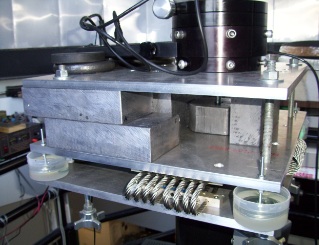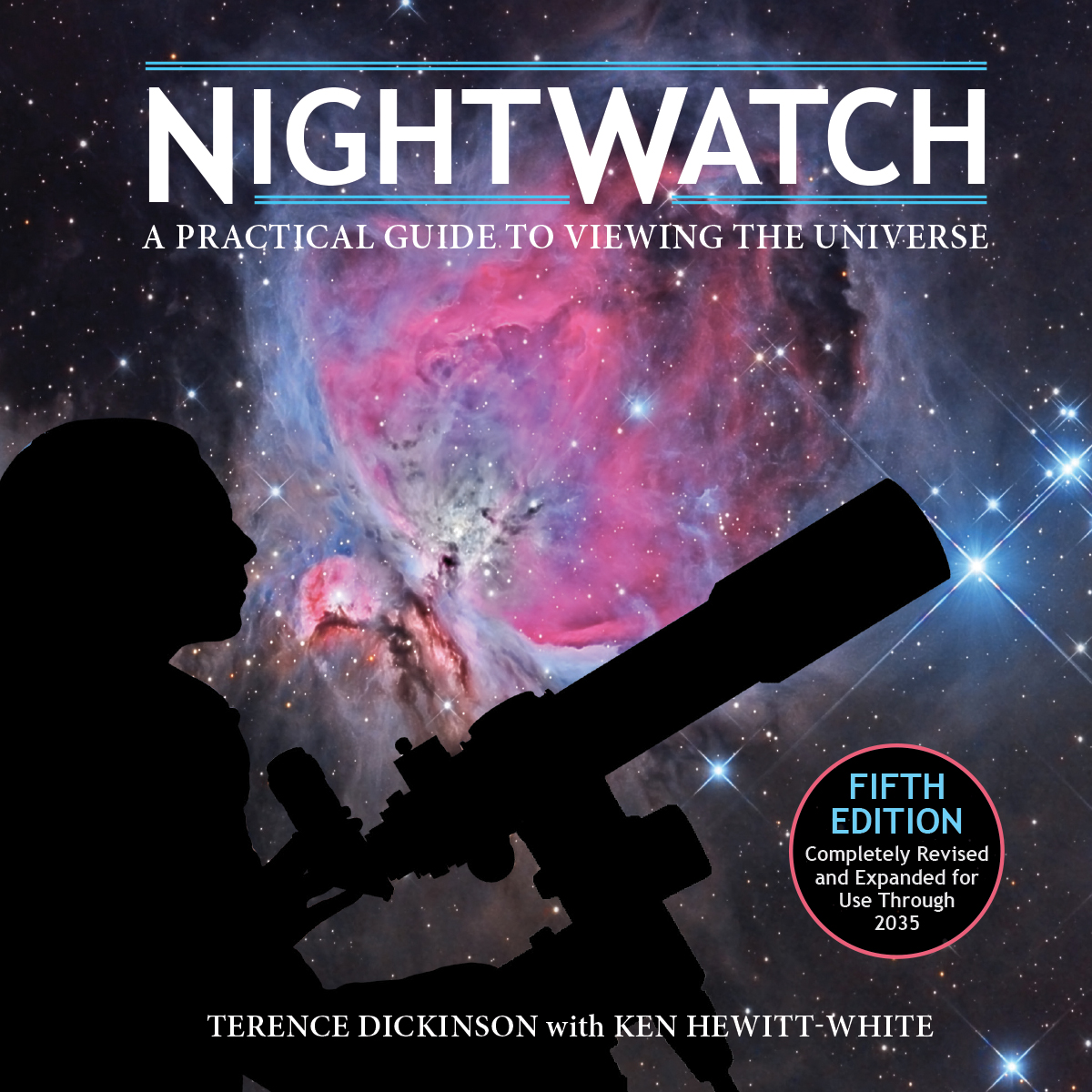
FAU's Astronomical Observatory is housed under a four meter diameter dome on the Boca Raton campus of Florida Atlantic University. We welcome students, faculty, staff and members of the general public to join our scheduled observations or our public viewing events. Our telescope is mounted on a small platform, at the top of stairs, looking out of the roof of our building, over Boca Raton, to space and beyond!
FAU has a 14" Celestron Edge HD Schmidt-Cassegrainian telescope that is mounted on a new Losmandy HGM Titan Equatorial Drive system. Plus, we have upgraded to a new Daystar 0.5Å Quantum Professional Edition Hydrogen-α filter. This offers us an image uniformity that has a peak transmission guaranteed within a FWHM of 0.5Å to beautifully enable us to see prominences "live" on and above the Sun's chromosphere. All of these new additions were made possible by FAU students through a grant from the FAU's Technology Fee.
Thank you, students!

As the observatory does not have its own foundation and suffers from image blurring vibrations from the building's machinary or from people, we have mounted our telescope and equatorial drive on pedestal that incorporates a newly and rather uniquely designed (and continuously worked on), vibration dampening system. This system is uses an interalized weighted "keel" with a vibration dampening, "wiffled" tube, which sits in about 7.0 gallons of a highly viscious silicone oil from Dow-Corning. The top end of the keel is attached the top plate of a set of parallel plates that sandwiches a set of helical isolating springs and bricks of lead, as seen in the image here. The lead provides the inertia for the springs to work against as the vibrations come from below. Very much like the shock absorbers on your car, the majority of the car's mass rests on top of the absorbers. When your car hits a pothole, the shocks push your wheels down to help keep the rest of the vehicle moving evenly along.
The keel hangs down through a large hole in the bottom plate, so it is not connected to it. The sandwiched springs absorb some of a vibration's shock energy. The energy that does pass through them will cause the keel to move or oscillate a bit, which then will have to move through the viscious oil. The oil causes drag forces on all of the keel's surfaces, which dampens out the vibrational energy. The added dashpots help slow down side to side tilting. Yes, you can still make the telescope shake if you try to, but the shaking comes to a stop much faster now than it ever did before. This design was suggested by FAU's machinist Jeff Webb and then worked on Jeff and by FAU's other machinists Fredrick Knapp, Mark Royer, and myself.
We also have the following accessories for our telescope: a Losmandy Gemini Computer for deep sky objects, a Spectroscopic filter, CCD cameras, a new Broad-Spectrum Solar filter for the new telescope to view sunspots.
Finally, we have also started a collection of meteorites for display. If you wish to learn more about meteorites, I would recommend a visit to Washington University in St. Louis.
Why Florida Astronomy?Florida boosts no mountain at all in the state. Its highest point is on the slope of a hill that peaks in Georgia. Having a high location normally benefits an observatory as it allows them to look above an interfering atmosphere that blurs their views. The state is also almost totally surrounded by ocean and has plenty of lakes, which increases the humidity here. So what benefit does Florida offer to astronomy to boost so much astronomical glass to be invested here?
|
|
Well, there are a lot of people in the state with time to look up and enjoy the heavens and many of them remember just how enjoyable clear, dark and starry night skies are to behold. But besides having such a populace interested in Astronomy, I can think of five major benefits that Florida offers to the science, especially for America.
travel across the sky, also appears higher in our skies. Again, this means that we often have less blurring effects to interfere with our views of solar system objects, such as the planets, comets, asteroids, ...
Perhaps it isn't much to boost of, but they are astronomical advantages to our state. If people would better protect the night skies by eliminating the light pollution here , then astronomical tourism to the state would be greater as well. I think that:

could be a winning advertising campaign for the state, don't you?
If YOU are ever interested in getting into Observational Astronomy, then I often recommend a good book to get started so that you know how to do it, where to look, what it is and what does it mean. One that I feel that is an excellent introduction the practice and does all of it well is Terence Dickinson's NightWatch, published by Firefly Books.
His book is full of beautiful pictures and practical information so anyone can get started. I especially like how he incorporates a variety of interesting facts about the various celestial objects right in his star charts.
Astronomy, Our Perceptions of Light, and the Impact of Light PollutionFirst to understand what it does, it is helpful to understand the equipment we use to see the stars. And here, by equipment, I do not mean telescopes, I mean our own eyes. Our eyes use two light receptive cells for viewing called rods and cones, so called because of the cells' shapes, and another type of light sensitive cells, called
photosensitive gangalion cells, that our bodies use to set or
|
|
Daytime vision uses cone cells, it is called photopic vision and operates at luminance levels from 1 to 106 cd/m². The cones come in three varieties, each of which detect light in particular ranges of spectra; blue cones predominate in the blue region of the spectrum, green cones predominate in the green and red cones in the red. Any color that we see and interpret to be some other named color (like "magenta" or "ochre") is realized by different intensities of the three primary colors.
Night vision uses rod cells, which can sense a single photon of light, but only in the bluish-green region of the spectrum, its peak spectral wavelength is 498 nm. Called scotopic vision, it occurs at luminance levels of 10-2 to 10-6 cd/m². It only distinguishes brightness levels in light of that blue-green region, thus it is insensitive to the red region. In order for them to detect light, it needs to make use of a pigment that reacts to light called rhodopsin. Rhodopsin is what our bodies create when it uses vitamin A. At twilight levels or in the presence of too much blue light, rods saturate, for we simply cannot make rhodopsin fast enough. As they can no longer provide information to our brains, and so, we become night-blind. To avoid becoming night blind, we avoid blue light and operate in a red only, night mode, as seen in the picture to the right.

A scale showing apparent magnitude limits of commonly seen objects.
Brightness
-- Stars vary in their perceived brightness, not just because of their different distances, but also because their varied outputs. The differences in brightness are described by the star's magnitudes, the larger the magnitude's value, the dimmer the star appears. While this may sound backwards, the reason is historical. In 134 B.C. a new star appeared in Scorpio. So, Hipparchus, a Greek astronomer, made a new catalog the stars. He recorded 1080 stars, by latitude and longitude and defined them into orders of brightness. This catalogue was the basic standard reference for the next sixteen centuries. (A Short History of Astronomy, Arthur Berry, 1898, Dover Publication, Inc. New York, 1961 Edition). 280 years after Hipparchus, Ptolemy, another Greek scientist, gave them numerical values of magnitude to the stars did so according to their
perceived importance
or brightness of the star. The brightest stars,
obviously
had to be a first order of importance and hence got a magnitude of one, the stars that are a bit dimmer must have been the next order of importance, hence had the magnitude of two, and so on. They were able to identify six orders of brightness in the stars, and the classification of magnitude was created.
|
The problem is that the measurement was a bit subjective. One person might have said that a star had a magnitude of 2.9, while another described it to be 3.1. So in the modern era, magnitudes have been redefined so that a difference of five orders of magnitude equaled a exact 100-fold multiplier in brightness. Thus, +1.0 magnitude star is 100 times brighter than a +6.0 magnitude star. So then the brightness multiplier of a single increment in magnitude works out to be the fifth root of 100, which is just 2.512. The table to the right hints at how simple the math is to figure out the brightness multiplier for differences of apparent magnitude. First, "break apart" the app. mag. into multiples of five and whatever remaining mag remainder is left. Convert each "2.512 to the fifth power" factor to 100, and the remaining to their multiplier, then multiply them back together. As an example, convert a difference of apparent magnitude of 14 into its brightness multiplier:
Which is how much brighter the Sun (mv = 27) is compared to a typical full Moon (mv = 13). Nowadays, we can more easily measure a star's brightness using electronics. Of course, people can see that one star is brighter than another star. But if you were to ask them if they thought that the first star was many times the brightness of the other, most would say no, even if it is. For them, the many times brighter star could just be a couple of increments brighter in magnitude; however an electronic device will measure the actual photonic count to be. Or likewise, can you believe that it would take the light output of four hundred thousand full Moons just to equal the brightness of the Sun!?!? |
|
This means that as our eyes perceive brightness on a logarithmic scale, then doubling the amount of light is only perceived by us to just be a small increment or change in the light's magnitude. This is one of the reasons why increasing the amount of light often produces such futile results.
Source: International Dark Sky Assoc. |
The impact of light pollution is to reduce our eye's limiting magnitude. That means that we can see fewer and fewer stars. The table at the left lists off about how many stars that we can see for a given limiting magnitude. As we can only see half the night sky for any given night, then we should only be able to see half those numbers for any given night. For an apparent magnitude limit of +4, the Milky Way galaxy can no longer be seen by the naked eye. Thus, people living under skies that have a limiting magnitude of +3, are truly robbed of what should be, by birthright, their ability to see a majestic wonder of the skies. What is especially amazing to me, is that this theft occurred only within the most recent one hundred years of human history and |
Perhaps it isn't much to boost of, but they are astronomical advantages to our state. If people would better protect the night skies by eliminating the light pollution here , then astronomical tourism to the state would be greater as well. I think that:
could be a winning advertising campaign for the state, don't you?
If YOU are ever interested in getting into Observational Astronomy, then I often recommend a good book to get started so that you know how to do it, where to look, what it is and what does it mean. One that I feel that is an excellent introduction the practice and does all of it well is Terence Dickinson's NightWatch, published by Firefly Books.
His book is full of beautiful pictures and practical information so anyone can get started. I especially like how he incorporates a variety of interesting facts about the various celestial objects right in his star charts.